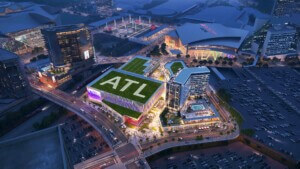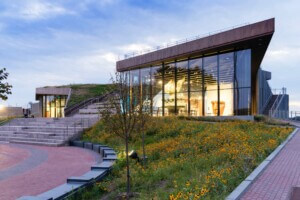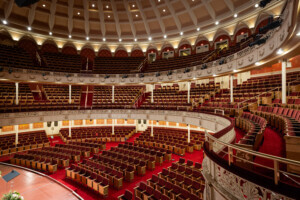New York Governor Kathy Hochul announced earlier this week that the current and former sites of Terminals 1, 2, and 3 on the south side of John F. Kennedy International Airport in Queens will be redeveloped to make way for a $9.5 billion international terminal that will be built out in phases beginning next year. With the first of its 23 gates anticipated to go live in 2026, the 2.4-million-square-foot new Terminal One will rank as the largest at JFK and, per a news release from the Governor’s Office, “aspires to be among the top-rated airport terminals in the world.”
Full completion of the new terminal is anticipated in 2030, although with the COVID-19 pandemic still very much impacting the way we live and travel, that timetable could still shift.
A design-build team of AECOM Tishman—the construction management arm of global engineering giant AECOM—and Gensler have been tapped for the massive revamp, which is expected to generate over 10,000 jobs, including 6,000 union construction jobs.
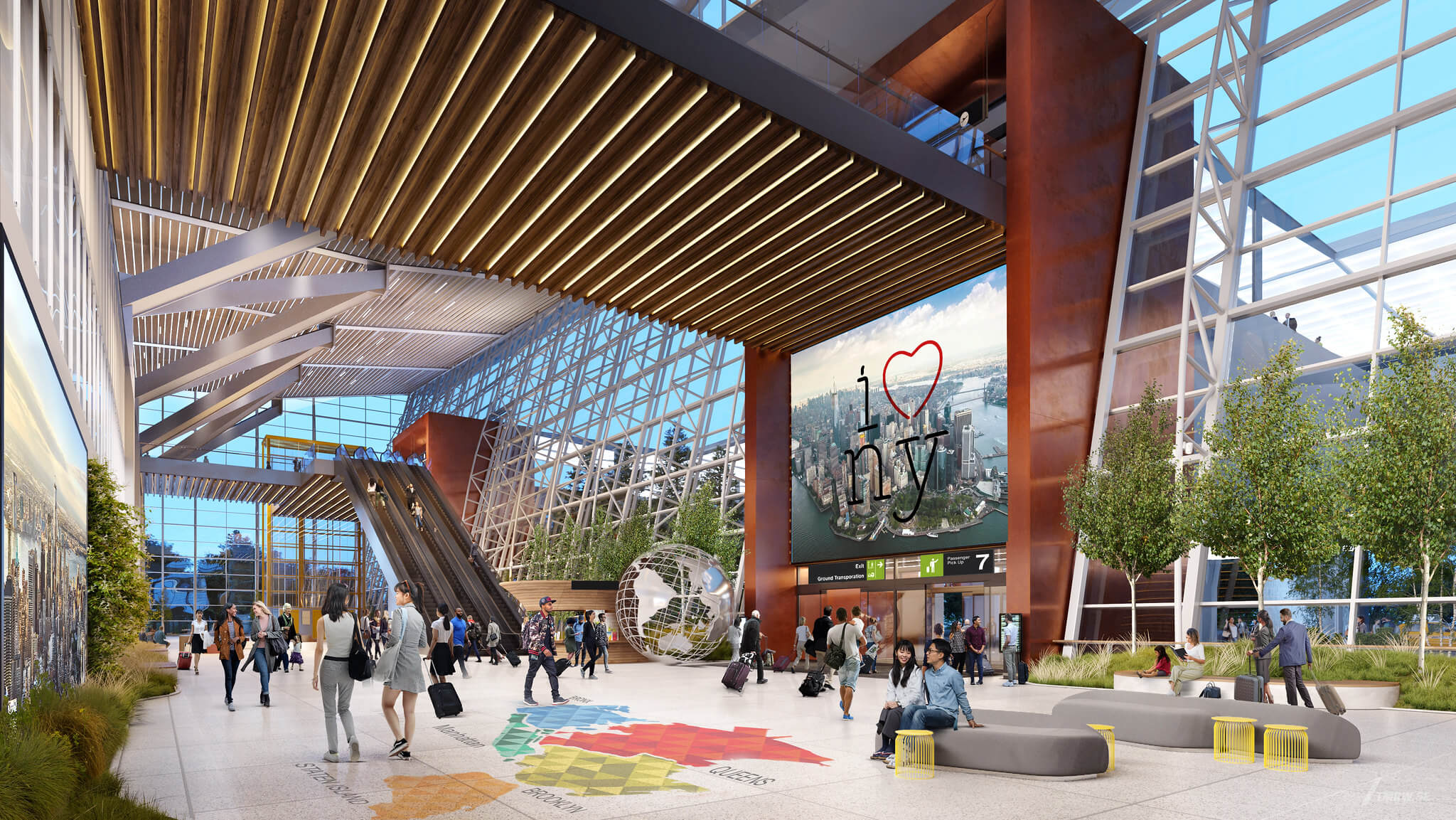
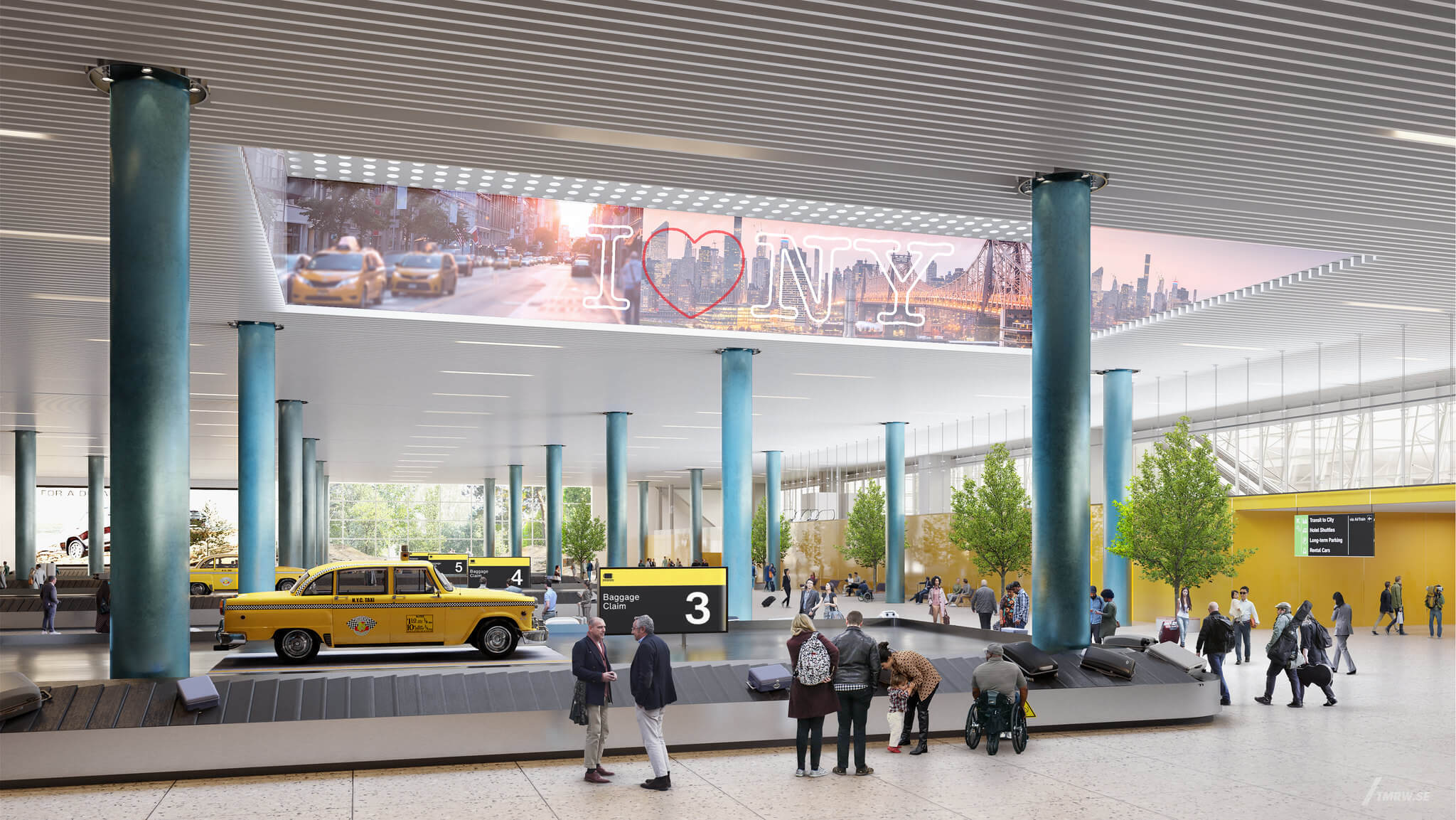
Airport owner and operator the Port Authority of New York & New Jersey is working in close collaboration with the JFK Community Advisory Council to ensure that all major redevelopment projects planned for the airport are subject to extensive community engagement and provide “meaningful opportunities” to local businesses, students, job-seekers, and others. As detailed in the announcement, these efforts include programming that will help to advance the Port Authority’s “commitment to a 30 percent MWBE contracting goal in all categories of work, and a special focus on opportunities for local businesses across all aspects of the JFK Redevelopment program, including this terminal project, which will be built by union labor under a full project-labor agreement.”
The full cost of the terminal will be privately financed by The New Terminal One (NTO), a consortium of a trio of investment and management firms: Carlyle, JLC Infrastructure, and Ullico. Reach Airports, a joint venture of Munich Airport International and CAG Holdings, is the operating and technical services partner to the consortium. NTO recently finalized a revised proposed lease agreement with the Port Authority, and that agreement will be voted on by the Port Authority Board of Commissioners tomorrow, December 16. NTO’s financial backing ranks as the largest private investment ever committed to an airport terminal in the United States.
“As we recover from this pandemic, I want to ensure that everyone traveling to New York has a welcoming and streamlined experience, and that New Yorkers have the modernized transportation hubs they deserve,” Hochul said in a statement. “The time to get large infrastructure projects done is now, and I’m committed to getting JFK’s brand new Terminal One underway and completed as soon as possible.”
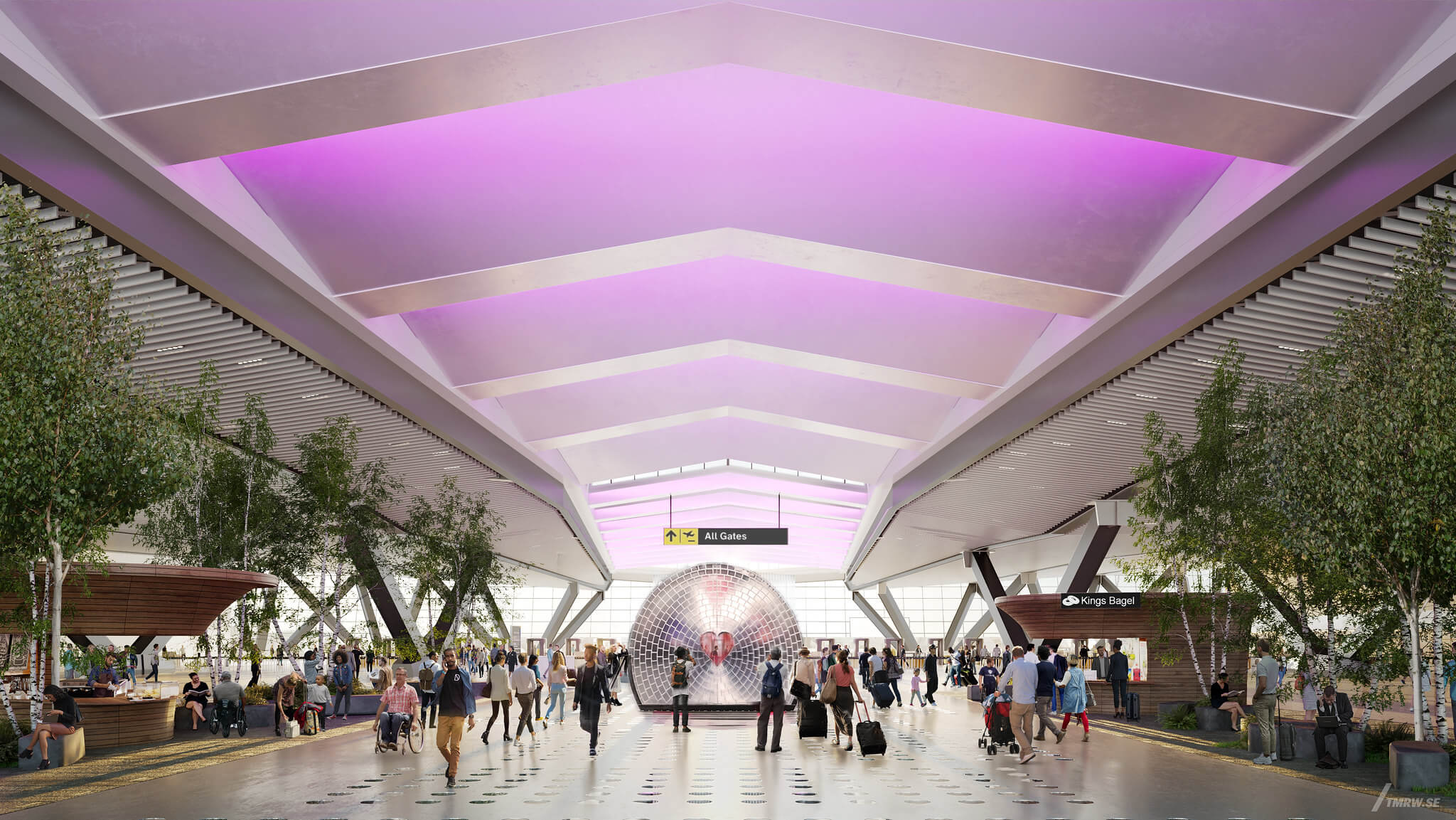
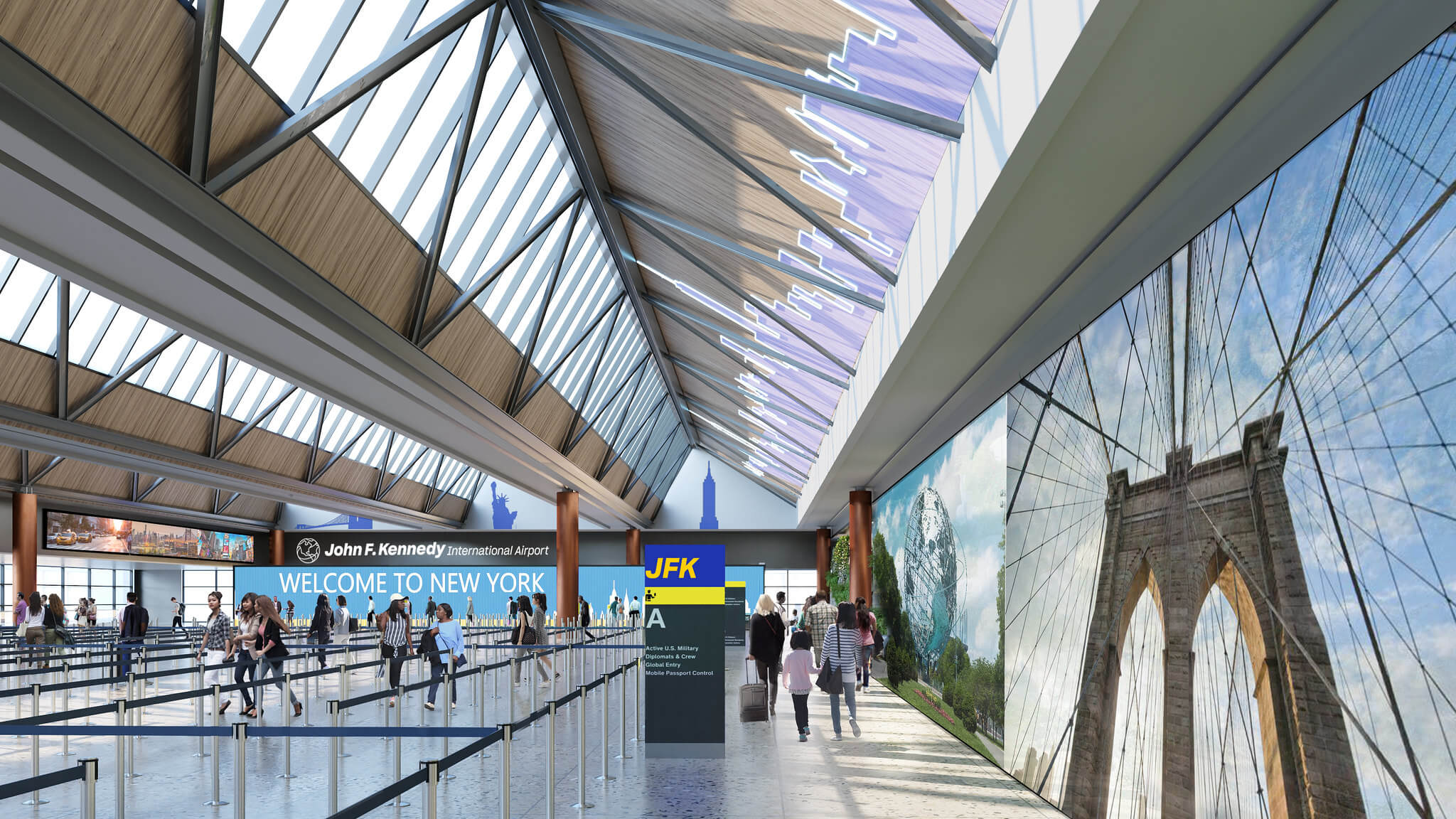
As alluded to by Hochul, plans to develop a new international terminal on the southern end of the JFK complex aren’t entirely new. Work on the new Terminal One was initially slated to commence in 2020 but the project was shelved due to the “severe impact” of the pandemic on air travel, and the terms of the aforementioned agreement between NTO and the Port Authority required restructuring. The announcement of the revised agreement “reflects a significant vote of confidence by the private sector in the future of JFK Airport, the return of air travel, and the economic recovery of the region” while taking “a major step forward in the ambitious plan to transform JFK into a unified, 21st-century global gateway,” according to the Governor’s Office.
“The Port Authority is committed to rebuilding and transforming our airports into the world-class facilities the region deserves. The New Terminal One project at JFK will deliver on that commitment,” added Port Authority executive director Rick Cotton in a statement. “At the height of the pandemic, when JFK Airport was seeing an unthinkable two percent of its pre-Covid passenger volumes, we never lost sight of finding a path forward for this world-class terminal that aspires to be one of the best on the globe.”
Packed to the gills with amenities including multiple lounges, soaring indoor green space, and a bevy of retail and dining options, the new Terminal One will “incorporate the latest advances in both sustainability and security and be infused a with uniquely New York sense of place.” High-speed WiFi that will be available to visitors gratis, abundant natural light, public art, and spacious check-in, security, and concession areas are all being touted along as standout features along with an array of bells and whistles including digital passenger flow and queue management systems and TSA lanes equipped with advanced video search analytics, biometric-based systems, and a “flexible design to accommodate future technology and/or regulatory changes.”
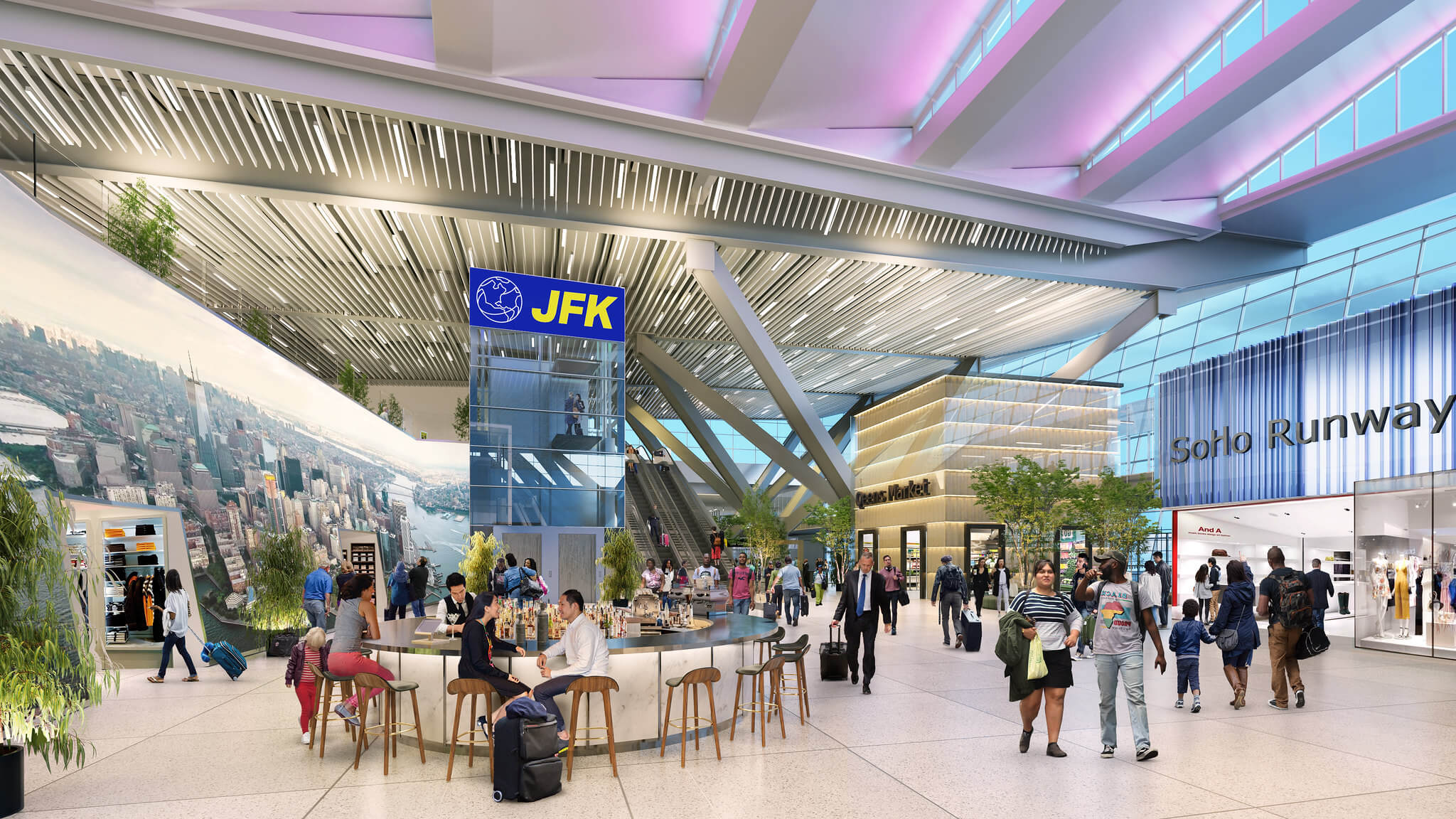
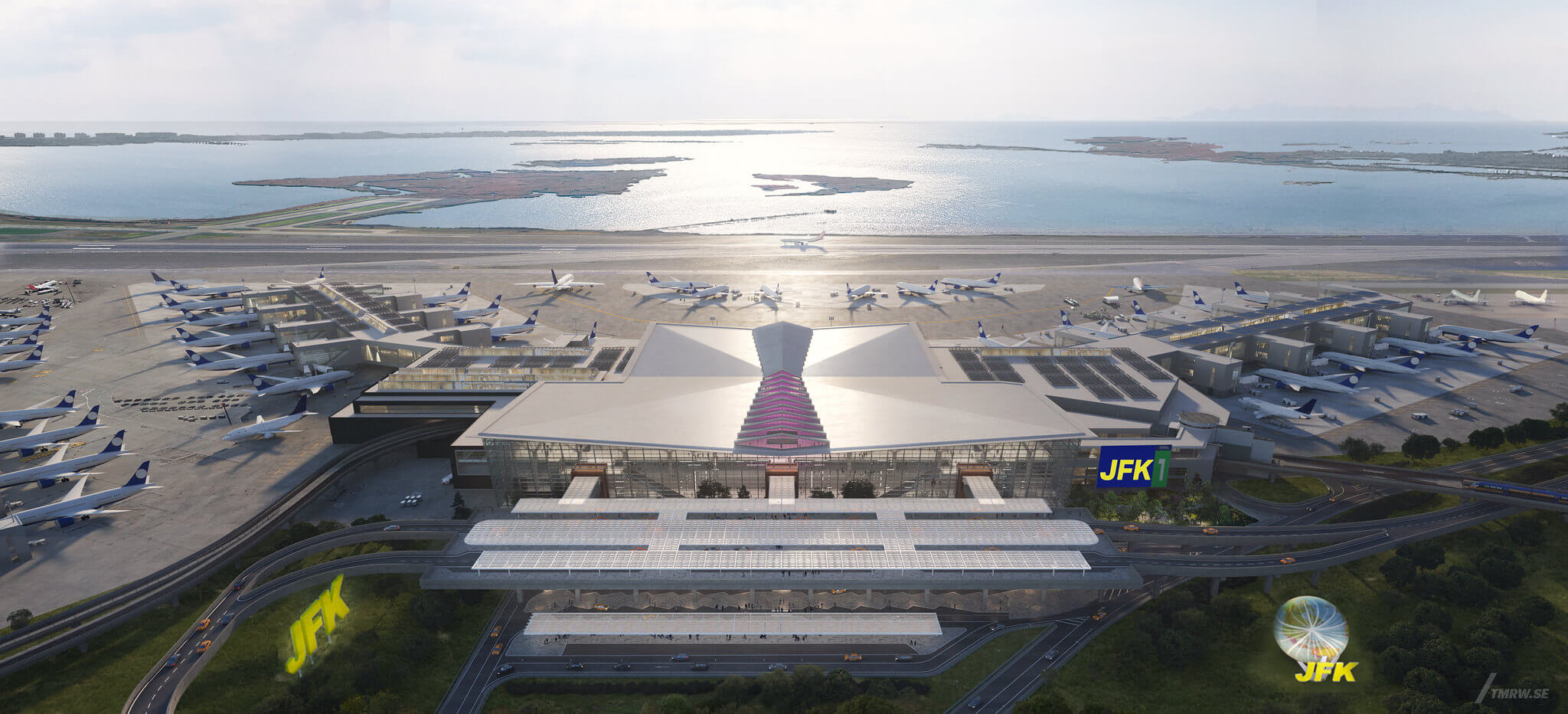
The new terminal’s sustainability bona fides include solar hot water heating as well as an airport-wide switch from diesel-powered ground service vehicles to an all-electric fleet.
As part of the project, the Port Authority will take the lead on $2.9 billion in infrastructural upgrades—roads, parking, utilities, and more—at and around the 134-acre redevelopment zone, which is currently home to “the undersized and outdated” Terminal 1, an international terminal completed in 1998 with a design by William Nicholas Bodouva + Associates. The tract also includes Terminal 2, a smaller terminal building from 1962 that currently accommodates some Delta flights but it expected to be vacated entirely next year, and the site of what was once Terminal 3, an iconic 1960 structure demolished in 2013–2014 to make way for Delta and JFK International Air Terminal’s now-underway Terminal 4 expansion. The demise of Terminal 3, the flying saucer-esque former Pan-Am Worldport, faced considerable pushback from preservationists and was featured on the National Trust for Historic Preservation’s 2013 list of America’s 11 Most Endangered Places. The site is now used for Delta aircraft parking.
As mentioned, the construction of Terminal One is the largest and most costly of several major overhauls in the works at JFK including the $1.5 billion expansion of Terminal 4, the recently approved $3.9 billion development of a new Terminal 6 for hometown carrier JetBlue on the northern end of the airport, and the ongoing $425 million expansion of Terminal 8, led by American Airlines and British Airways, the latter of which will relocate to the expanded terminal when its longtime home at Terminal 7 is demolished to make way for the new Terminal 6.
Not including the already-razed Terminal 3, a total of three existing terminals—1, 2, and 7–will be demolished to make way for the quartet of new and expanded facilities.








